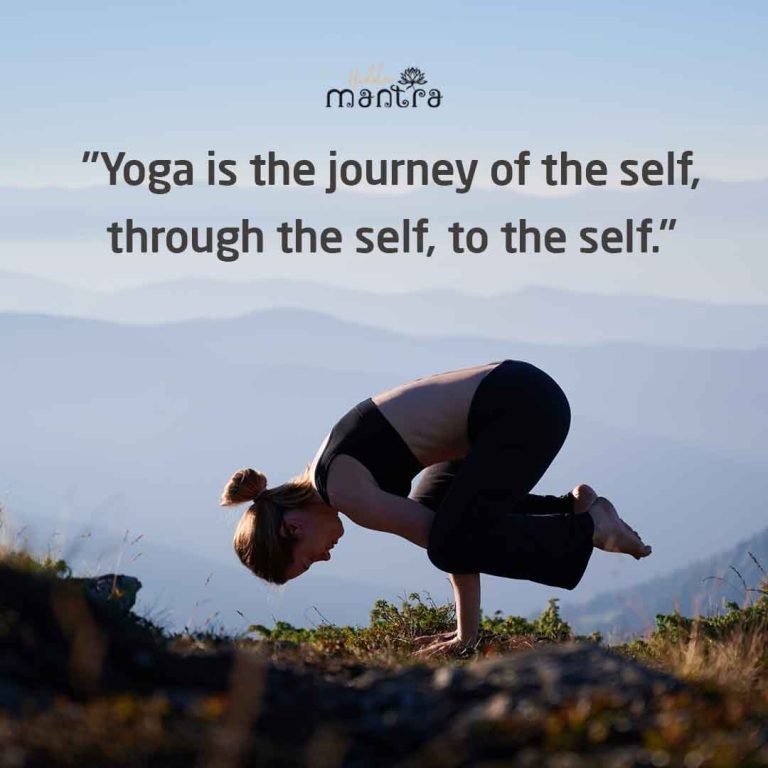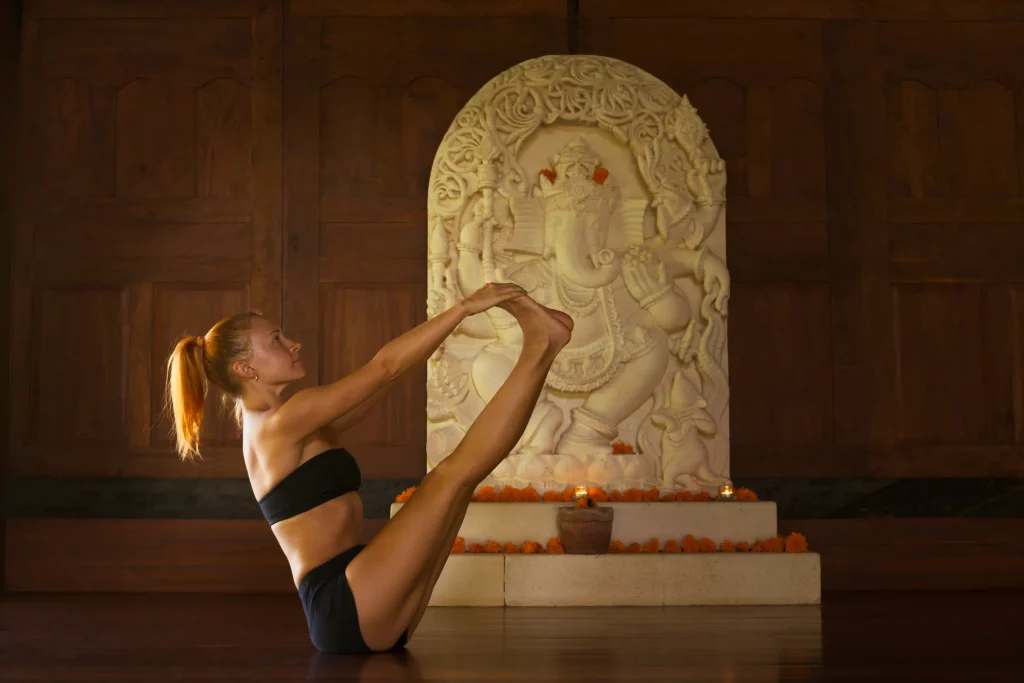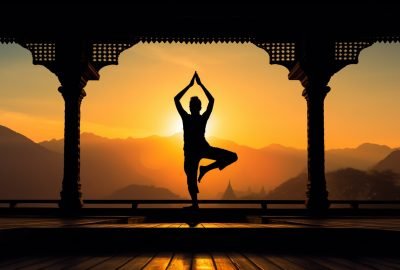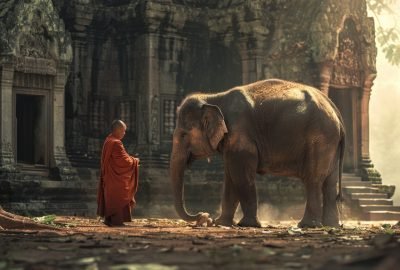
Introduction to Yoga
As mentioned in the Bhagavad Gita, “Yoga is the journey of the self, through the self, to the self.”
Yoga is a 5000 years old ascetic tool practised for a myriad of spiritual and religious reasons. The prime pretexts were self-awareness, spiritual awakening, end of materialistic desires, self-fulfilment, and liberation from one’s suffering (moksha).
A fusion of body postures, breathing, and meditation, crafted in a way to illuminate the path of an individual’s enlightenment.
The mystical discipline of yoga has been there ever since human civilization came to dawn.
The Sanskrit word “Yuj” is the root word for yoga, denoting yoke or union.
Yoga unites your body, soul, and mind to establish internal peace and harmony between the outside and inner world.
“Patanjali” is the father of classical yoga known for his renowned Sanskrit scripture called “Yoga Sutras”. He assimilated all the different forms and styles of yoga into simple 8 Limbs of Yoga.
This provided the framework for the lineage of generations after him to learn and apply this timeless art in their life.
So, let’s explore further the spirituality of this primordial human skill in this blog post.
Definition of Yoga
Many erudite scholars have interpreted the definition of yoga according to their understanding. Patanjali defined Yoga as restrictions on the deviations of consciousness. Krishna in Bhagavad Gita called Yoga a balance of life.
Vedas mentioned it as a union of your spirit with the universe. While some regard it as the end of suffering, ascending the higher realms of oneself, attaining nirvana, or balancing the conscious and unconscious mind. While the modern definition says it is an art of healthy living. But the root definition remains unchanged – A mindful ritual to connect your soul with the divine or cosmic energy.
Brief History and Origin of Yoga
The exact date of the launch of yoga into mankind is hard to pinpoint. But it has been followed as a spiritual ritual for many thousands of years.
As per Hindu mythology, Shiva appeared as the Adiyogi (the first yoga). On the banks of lake Mansarovar, in the Himalayas, the Adiyogi poured his Yoga expertise into the fabled Saptrishis or the Hindu seven sages. He teaches each one in different 16 dimensions, totaling 112 ways of yoga- sadhana. Those legendary sages further disseminated the knowledge across the world- North Africa, South America, and Central Asia. Among them, Agatsya Muni popularised yoga in ancient India as a way of lifestyle. The course of the history of yoga never did run smoothly. Constant changes have been adopted throughout different periods, as per individual’s perception. Those ambiguous variations are uneasy to mark as yoga teaching was granted verbally. Until sage Patanjali structured all these spoken lessons into a written work.
Apart from Patanjali’s Yoga Sutras, yoga has dwelled in several sacred texts like Vedas, Upanishads, epics of Ramayana and Mahabharata, Five Great Vows in Jainism, and Eightfold path by Buddha. Even the seals of the earliest Indus Valley Civilization, have figures performing Yoga Sadhanas. The common ground is that yoga is to awaken the dormant inner universe, to connect with the divine’s universe.







Different Forms of Yoga
The expression of yoga is multifaceted. Each of its diverse sub-topics is a big topic in itself. It incorporates an array of methods, processes, approaches, and techniques, subjective to an individual’s use and opinion. These different approaches and styles are categorised as the “different forms of yoga”. Albeit, the range of yoga is infinite. Still, we group the most significant forms of yoga, which emerged in different periods.
Pre-classical Yoga
Pre-classical yoga refers to the period of the development of yoga, post-Vedic era, around 3000 B.C.E. During that time, yoga was orally instructed from the teacher to the student. Mostly meant for ascetics and hermits, who sought to achieve liberation (freedom from the cycle of birth and rebirth). Those ascetics only documented their practices in sacred texts like Rig Vedas, Upanishads, and Bhagavad Gita, which laid the foundation for modern-day yoga.
Classical Yoga
Classical yoga delineates the first ever organised written demonstration of Patanjali’s Yoga Sutras. It talks about the 8 limbs of yoga, also known as Ashtanga Yoga. These eight-limbed paths are Yama(ethical principles), Niyama (observances), Asanas (physical postures), Pranayama, (breathing practices), Pratyahara (withdrawal from the senses), Dharana (concentration), Dhyana (focus), and Samadhi (spiritual absorption). The aspects of Yoga Sutras, greatly influence the many practices of yoga today.

Post-Classical Yoga
A period of yoga’s history where radical changes occurred in yoga.
People found multiple distinctive yoga methods, like Hatha yoga, Raja yoga, Jnana Yoga, Tantra Yoga, Bhakti yoga, and Karma yoga. Amidst this, Hatha and tantra yoga were embraced by many people.
The proposal was to break the knots of the physical body limitations, to prepare it for its mystic journey.

Modern Period

The 6 Paths of Yoga
Karma Yoga -Karma means action. It pertains to the yoga of selfless service. As Krishna says in the Bhagavad Gita, one should be dedicated to serving others, without any expectations for reward.
Being detached from the fruits of your work liberates you from all selfish thoughts, desires, and feelings.
You gain control of your acquisitive mind and attain equanimity.
Bhakti Yoga-Bhakti comes from “bhaj” meaning to worship in Sanskrit. It is the yoga of devotion, where you devote all your love and emotions to the divine.
It is the straight path to gain spiritual growth by surrendering yourself to your deity province.
Shravana, Kirtana, Smarana, Pada-sevana, Vandana, Dasya, and Sakhya are the limbs of the Bhakti Yoga to function.
Raja Yoga– Raja means royal or King. This yoga pertains to Patanjali’s eight-limb path of yoga.
Through self-disciplined meditation, you purify and refine your mind. Thereby cultivating enduring inner tranquillity and transcending the higher levels of consciousness.
Jnana Yoga– It is known as the yoga of wisdom or knowledge. Better suited for scholars and sages, to self-study to self-realise their truth.
It develops and upgrades your intellect by contemplative reasoning and self-inquiry to liberate yourself.
Tantra Yoga– “Tantra” comes from Sanskrit, meaning weaving. This form of yoga “weaves” the body in a way to prepare it for union with the divine.
That’s achieved through a set of rituals and especially, by strengthening the Kundalini power within you.
Tantra yoga is quite secretive, as no proper texts are available, passed down orally from guru to shishya.
Hatha Yoga– The most common form of yoga practised today. It involves asanas, breathing systems, and pranayama. The words “ha” and “tha” in hatha correspond to Sun and Moon. It balances the Sun and Moon energies within you.
It is the “yoga of force”, aimed at altering the limitations on the physical body to bring an individual into equilibrium.
Importance of Yoga
“The mind is everything, you become what you think.“, Buddha. Meaning, our mind is the only problem and the solution for our deteriorating life. Most of our troubles arise from being unable to adhere to the rhythmic shift of good and bad in life. Our overthinking, overanalyzing, and over evaluating peaks up, slowly swallowing our mental, physical, and spiritual health. Thus, yoga comes as a holistic arrangement to sway away the elusive whirlings of the mind. As a result, your emotions, intellect, and behaviour all get in equilibrium. With self-awareness and self-realisation, you connect with yourself, leaving behind a deep bond with this big superficial world. Therefore, fostering a full-fledged happy, peaceful, and purposeful life. With a gamut of merits, it is a necessity in this modern world for your physical, mental, and spiritual well-being.
if you’re looking for a way to improve your physical, mental, and emotional well-being, practicing yoga is a great place to start. But don’t just take our word for it – check out this motivational yoga page for more inspiration of your practice. This page can help you stay motivated and achieve your goals.
Embark on a transformative journey through yoga with Hidden Mantra. Let our knowledgeable guides lead you through a harmonious blend of physical postures, breathwork, and meditation, engaging yourself in ancient practices and wisdom. Find a deeper connection to yourself and the world around you as you discover the profound benefits of yoga, nurturing your mind, body, and spirit. Trust Hidden Mantra as your companion on this empowering path towards self-discovery and inner transformation.








